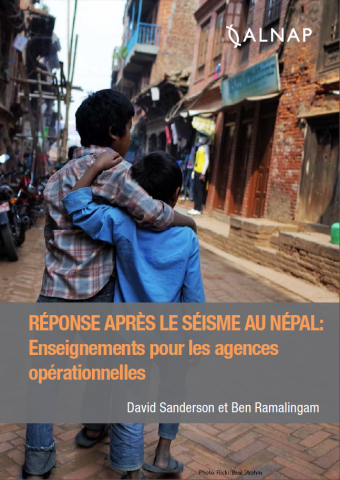Réponse aprés le séisme au Népal: Enseignements pour les agences opérationnelles


Le présent rapport sur les enseignements tirés a pour but d’aider les agencies opérationnelles intervenant après le tremblement de terre qui a frappé le Népal le 25 avril 2015. S’inspirant de l’expérience de catastrophes passées similaires, il propose 17 leçons tirées d’évaluations, de rapports de recherche et d’entretien avec les praticiens humanitaires opérant sur le terrain.
Les principaux liens vers les informations importantes sont fournis après chaque enseignement, les réferences figurant à la fin du rapport. Les enseignements sont classés en deux catégories : «stratégie et gestion » et « exécution technique ». Le séisme superficiel de magnitude 7,8 a frappé à 81 km au nord-ouest de Katmandou et a été suivi de deux tremblements de terre plus faibles et de fortes répliques sismiques. Un peu plus d’une semaine après l’impact, le bilan était de 7 000 morts et ce nombre devait s’accroitre. Selon les estimations des pouvoirs publics, 70 000 habitations ont été détruites et plus de huit millions de personnes sont touchées.
AlNAP, May, 2015
versión en línea del informe
http://www.urban-response.org/resource/20425
